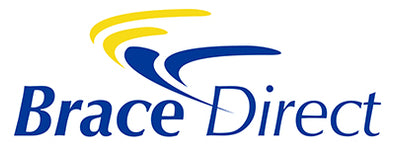
Basketball Ankle Injury Recovery: 5 Steps to Get Back on the Court
Basketball ankle injuries are the most common sports injury, accounting for over 40% of basketball-related injuries. An ankle sprain or ankle injury might seem minor at first, but rushing back too soon can leave you sidelined for weeks. Whether you’re a weekend warrior, high school basketball player, or just out for a jog, proper ankle injury recovery is essential.
Nearly 60% of college basketball players experience another ankle injury in the same season after returning too quickly. This alarming statistic shows why proper sports ankle injury treatment matters.
This comprehensive ankle injury recovery guide gives you five evidence-based steps to heal faster, prevent re-injury, and return to basketball and other sports with full confidence.
Use Hot & Cold Therapy for Ankle Injury Recovery
Cold therapy controls ankle injury swelling by constricting blood vessels and numbing pain receptors. Heat therapy dilates vessels, bringing fresh oxygen and nutrients to the injury site and easing muscle tightness.
For the first 48 hours after your basketball ankle injury, apply an ice pack for 15–20 minutes every 2–3 hours. From day three onward, switch to heat packs or warm soaks for 10–15 minutes, two to three times daily. Always wrap packs in a thin cloth to protect your skin.
Many sports medicine professionals recommend alternating therapy: two minutes cold, two minutes heat, repeated three times per session. This cycle speeds lymphatic drainage and reduces ankle injury swelling up to 20% faster than cold therapy alone.
Apply ice or a cold pack for 15–20 minutes every 2–3 hours. This helps reduce swelling by slowing blood flow to the injured ankle area.
Use gentle heat packs or warm soaks for 10–15 minutes, two to three times a day. Heat increases blood flow and brings healing nutrients to the ankle injury.
Always wrap any pack in a thin cloth to protect your skin. Stop immediately if you notice unusual redness or burning sensation around the ankle injury.
Try our professional hot & cold therapy system →
Choose the Right Ankle Brace for Sports Injuries
A properly fitted ankle brace not only stabilizes your injured ankle but also retrains proprioception—your body's sense of joint position. Good proprioception is crucial for preventing future basketball ankle injuries and sports ankle injuries.
During days 1–5, when ankle injury swelling peaks, use a soft figure-8 lace-up brace. Its crisscross straps provide gentle compression and limit dangerous side-to-side rolls while still allowing basic movement for daily activities.
Once inflammation subsides (around day 5–7), transition to a semi-rigid ankle brace with firm side supports. This guards against larger twists during light basketball drills but still lets your ankle flex for walking and gentle ankle injury rehabilitation exercises.
When to use: Days 1–5 when ankle injury swelling is highest
How it works: Wraps snugly in a crisscross pattern. Provides light support and prevents dangerous side-to-side ankle rolls common in basketball.
Best for: Walking, daily activities, and early ankle injury recovery
When to use: After swelling drops (usually day 5–7)
How it works: Features firm side supports to block dangerous twists while allowing controlled ankle flexion for sports activities.
Best for: Return to basketball, light drills, and sports ankle injury prevention
Perform Daily Ankle Injury Rehabilitation Exercises
Short, consistent ankle injury rehabilitation sessions beat long, intense workouts. Spend about five minutes, twice a day, on these proven exercises. For sports ankle injury recovery, consistency trumps intensity every time.
Start each exercise slowly, focusing on control and proper form. As your ankle injury heals, add resistance bands or unstable surfaces to challenge your recovering ankle and prevent future basketball ankle injuries.
Lift your foot and draw large circles, 10 each direction. Essential for maintaining ankle range of motion during recovery.
"Write" A through Z in the air with your big toe. This exercise works all ankle muscles gently and improves coordination.
Stand and lift onto your toes, hold one second, then lower slowly. Perform 10 reps to rebuild calf and ankle strength.
Stand on your injured foot for 15 seconds. Use wall support if needed. Critical for preventing future ankle injuries.
These ankle injury rehabilitation exercises boost blood flow, improve balance, and retrain the proprioceptors—small nerves around your ankle that detect position and prevent injury. This is especially important for basketball players returning to cutting and jumping movements.
Stay Consistent with Ankle Injury Recovery
For successful sports ankle injury recovery, spread rehabilitation into 2–3 mini-sessions per day. This keeps joints mobile and blood flowing without triggering pain flare-ups. Think of ankle injury recovery like watering a plant—frequent, small amounts work better than occasional flooding.
For example, perform ankle circles after waking up, heel raises during lunch break, and balance exercises before bed. Short exercise bursts allow your injured ankle to adapt safely without overwhelming healing tissues.
Follow a Progressive Return-to-Basketball Plan
Returning to basketball too quickly after an ankle injury invites re-injury. Follow this proven progression—only advance when you complete each phase without pain or ankle swelling returning. This systematic approach is used by sports medicine professionals worldwide.
Walk 10 minutes on flat ground without ankle pain or limping. Master this before progressing.
Jog straight for 5 minutes—no cutting, pivoting, or direction changes yet.
Add side shuffles and slow cutting drills at half-speed. Test ankle stability gradually.
Return to sport-specific drills, scrimmages, and full-speed basketball with ankle brace protection.
Before returning to competitive basketball, compare your injured ankle to your healthy ankle. Aim for at least 80% strength and stability symmetry to minimize re-injury risk.
By following this evidence-based ankle injury recovery plan—proper hot/cold therapy, progressive bracing, daily rehabilitation exercises, consistent scheduling, and systematic return-to-play—you'll heal faster, reduce pain, and return to basketball stronger than before.
Remember: patience and consistency prevent future ankle injuries. Rush back too soon, and you risk joining the 60% of players who suffer repeat basketball ankle injuries.
Need help choosing the right ankle brace for your specific injury? Our sports medicine experts can guide you to the perfect ankle support for your recovery needs.







